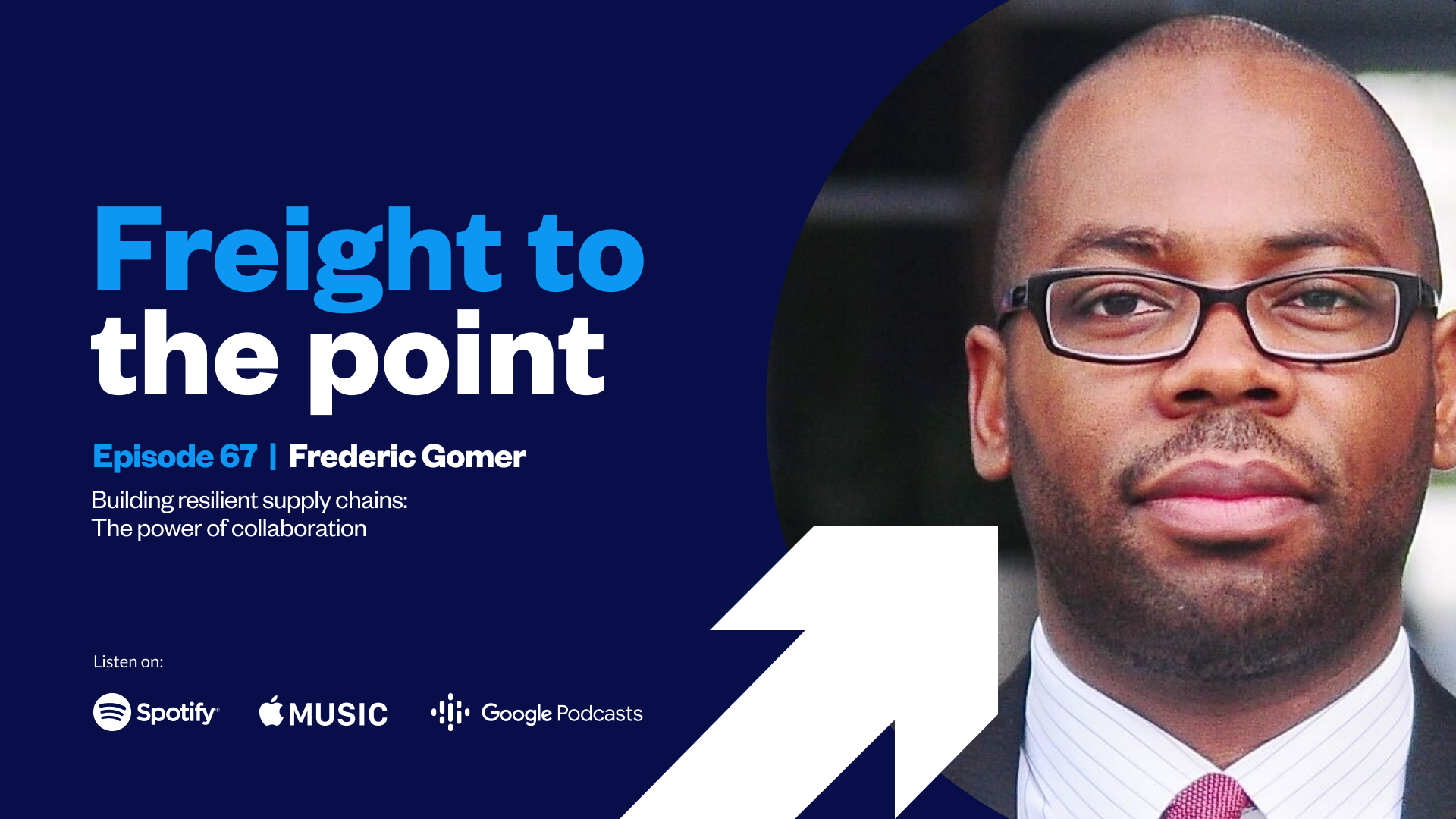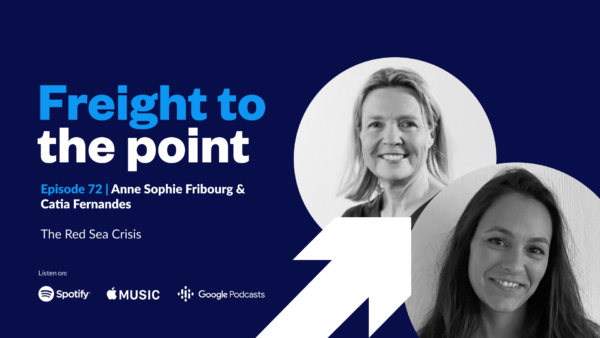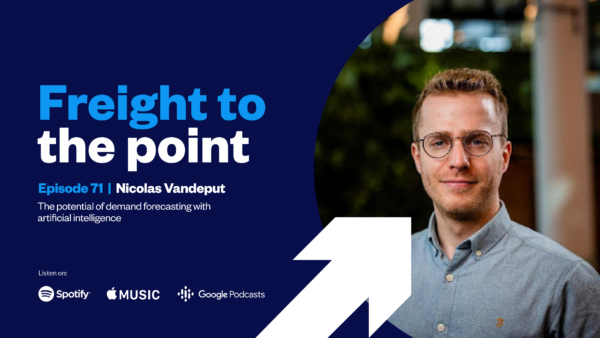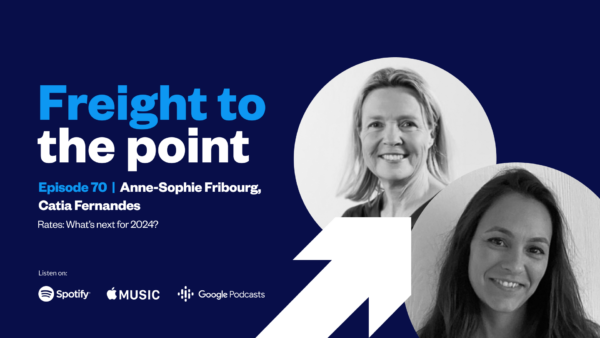Episode 67:
Building resilient supply chains - The power of collaboration
See all episodes

“And it’s like a marriage, it takes some effort to maintain the relationship. It’s about compromise and trust.”
As the business landscape is constantly evolving, companies are increasingly recognising the need to build resilient supply chains to withstand disruptions.
To shed light on this, Alex Hersham, Zencargo’s CEO and Co-Founder is joined by Frederic Gomer, Managing Partner of B2G Consulting, to talk about how collaborative relationships in supply chains can help drive supply chain resilience.
Together, they discuss:
- Defining resilience in modern business
- How to establish collaborative relationships in the supply chain
- Technology’s role in improving collaboration
Frederic Gomer
With an impressive portfolio spanning over two decades , Frederic has successfully assisted numerous industrial organisations in overcoming crisis situations. His past engagements include turnarounds, ramp-ups and restructuring powerhouses like Schindler, Smiths, and Faurecia, showcasing his adeptness at navigating high-stake environments.
Resources
Beyond rates: Why it’s time for the value of freight forwarders to evolve
How digital freight forwarding is shaping the future of retail success
Alex Hersham:
Hi, everyone, and welcome to another episode of Freight to the Point. I’m Alex Hersham and today I’m joined by Frederic Gomer, managing partner at B2G Consulting. In recent years, a succession of black swan events, including COVID-19 and Russians’ War in Ukraine, has left profound marks on supply chains. Those hit hardest? The ones with poor networks and limited connections. At Zencargo, we talk a lot about building relationships and really believe that this is key to building resilience and success in supply chains. And who better to discuss this than Frederic? Welcome, Frederic, would you like to give a brief background on yourself?
Frederic Gomer:
Sure, Alex, thanks for having me. I’m Frederic Gomer, managing partner of B2G Consulting. So we are a consulting firm specialising in operational resilience. So what we do is fixing crises for mainly manufacturing companies. So typically a vice president of a business unit or divisional president will call us because their operating revenue will be impacted by an underperforming manufacturing plant. And in most cases, the manufacturing plant will more likely to be in a crisis. So the orders backlog would be growing exponentially, the inventory would be up to the sky, and every day our clients would be losing millions of dollars or euros of operating revenues. So once we recover the crisis, we start to rebuild, or reconfigure, depending on the situation, the operations, to make sure that there won’t be any situations like that anytime soon. So that’s what we do.
Alex Hersham:
Fantastic. That’s super interesting. I think the word resilience there is a word that probably can mean many different things. Do you mind by starting explaining what you define as resilient and why it’s become such a critical aspect of modern business operations?
Frederic Gomer:
CLX, there’s, I would say most industrial organisations have been focusing on cost optimisation, becoming lean, reducing inventories, and to some extent, those companies have managed successfully to become highly cost-effective. However, over the past five years, many disruptions have happened. This is what you mentioned in your introduction. And I can mention the Suez Canal blockage, the semiconductor shortage, the Brexit, for those who are in the UK or dealing with some UK suppliers. And I’m not even counting the natural disasters, such as hurricanes or flood. And lastly, COVID-19. So all of that in a context where the customers’ demand have become very erratic and unpredictable. So cost efficiency, don’t get me wrong, is still very important. However, the cost of disruption, the cost of not being able to deliver a customer, is much worse. So a shift has happened, especially during COVID, which was a major global disruption, as we know. So now most companies in the industrial sector are looking at becoming resilient. So in short, resilient means being able to operate despite any disruptions. So that’s somehow the muscles that most organisations want to build right now.
Alex Hersham:
When businesses are coming to you and expressing their challenges and then you’re going in and you’re probably saying, “Okay, you had these challenges, but you also had these other challenges,” what are those common themes that companies face when trying to establish collaborative relationships throughout their supply chain and build resilience?
Frederic Gomer:
So in my experience, that’s a very good question, trust is a challenge. So trust is the basis for any collaboration, especially between different organisations, such as suppliers and customers. And because there’s a lack of trust, there are resulting challenges, such as limited visibility and transparency, throughout the supply chain. So culturally, suppliers and customers, they work, they do work together, but they do not trust each other. And it’s like a marriage, it takes some effort to maintain the relationship. It’s about compromise and trust. So just a quick disclaimer, I’m not a couple therapist, but that’s what is the main challenge. It’s about trust when it comes to collaboration.
Alex Hersham:
I thought this call was going to go somewhere very different there, Frederic, for a moment, I was about to invite my partner into the room, but I understand that trust is important in supply chains but also marriages. So then-
Frederic Gomer:
Exactly.
Alex Hersham:
-talking about that dynamic, which you’re right, it’s a complicated dynamic. How do you work with business to strike that balance between collaboration, maintaining a competitive edge, but doing it in a way where you build that trust with your, either upstream or downstream, so that it all works effectively?
Frederic Gomer:
So collaboration and competitive age are not enemies first of all. And I would even say on the contrary. So what I always say is that you are as strong as your weakest supplier. And for example, we are currently supporting a medical equipment manufacturer to ramp up their production output. And despite the fact that we’ve been able to triple the capacity in a short period of time, we have the production lines stopped because the main supplier is not able to supply the materials.
So if you want to maintain or develop a competitive edge, it’s unlikely that you can do it without the support of your main supplier, which means developing a robust, resilient supply chain with them, co-designing products, solving challenges together, both technical and operational issues. That’s, in my experience, what works best. And practically it means sitting down with your supplier, being honest and transparent in terms of the challenges that you are facing internally, and also the challenges that your supplier is facing internally. And how you can work together to make sure that this partnership, because in the end, it’s a partnership, it’s not just a transactional operation, works best in the end.
Alex Hersham:
I can imagine quite a few companies listening to this and saying, okay, Frederic, this makes sense. I get it. In business in general, trust, high performing relationships, being transparent, tends to make sense. But if you are a company also that has to be very cost competitive, I understand that having tighter, more collaborative relationships with your suppliers probably means that you’ll have an edge in the market and you’ll be able to move faster. But do companies also worry that over time, if they become too interconnected with a certain supplier or a certain set of suppliers, that that then leaves them quite exposed, both in terms of residual risk in their supply chain but also exposed to price increases? Or is that not really how it plays out?
Frederic Gomer:
It’s a risk potentially. The truth is that you may think that being in a relationship, back to this analogy of a marriage, can block you, prevent you of progressing. And it’s true, if it’s a toxic marriage. But if it’s a marriage which is going well, it will, on the opposite, give you the space of mind to be yourself, feel yourself, and then be on top of what you can do as a human being. And back to the industrial world, it is exactly the same thing. If it’s a healthy relationship with your supplier, it will actually help you to go further, to reach a level of performance that you may not be able to reach on your own and it won’t be a bottleneck or an issue. It becomes a bottleneck when you’re not working with your supplier, when there’s no collaboration, and when typically you are dragging your suppliers with you because you think you can’t do without them.
So having said that, that’s when you work with your supplier and when you develop your supplier on the other side, there’s also always a chance to mitigate the risk. What does it mean? It means that you should also have other options, which means that you may not put all your eggs in the same basket and have, most probably for a given product line, a fair share for supplier A and a smaller share for the supplier B. In this case, you still keep this competition in between, and whenever there’s an issue, you may have a backup plan.
Alex Hersham:
I guess when you collaborate and you work together on building or iterating, I guess the question of IP ownership also becomes an important question or is that less of an important question?
Frederic Gomer:
It becomes, I would say, beyond the technology, what the issue is, beyond the IP. Because there’s actually no shortage of tools in the market today when it comes to collaborations or visibility. The challenge is about choosing which tool is the right one for your requirements. And the second challenge is integrating two organisations on the same platform and sharing information. So we are back to square one on the trust. And this can only happen if there’s an established trust. So it’s not even about the technology itself and who owns the IP, it’s really about making sure that those two companies … And sometimes if we talk about platforms such as blockchains, where you can have multiple suppliers collaborating altogether with the company, is to make sure that they can collaborate together, they can share information within these platforms. And some companies manage to actually implement it successfully, such as Walmart, IBM, or Maersk, for example. They created such platform and they have sometimes a hundred of suppliers to manage under one roof.
Alex Hersham:
You spoke a bit there about technology towards the end, obviously it started with IP but then moved a little bit to how you can manage that. There’s obviously a very human element in building trust and building high performing relationships across your supply chain. What’s the role of technology in this? And in your experience, what sort of things have you tried to implement? You don’t have to name names. What type of technology have you tried to implement to help improve your customer supply chains?
Frederic Gomer:
So technology, is the human aspects, I already mentioned it. And once you pass that and you are willing to work with your supplier and your supplier is willing to share information with your organisation. Then there are, I would say, digital platforms which allows you to collaborate to manage your transactions, which can be basic transactions, POs, open POs, but also reconciliation of invoices, for example. Or just collaborating, sending message when escalating issues, for example. So those tools are actually very helpful when it comes to have two organisations, and sometimes it’s more than just two organisations, to work together and collaborate together.
Alex Hersham:
And when you think about measuring and tracking success, there’s one thing coming in doing a project and setting it up for success. What KPIs do you then put in place or how do you build best practice so that your client is happy on a multi-year basis rather than just for a sprint of six months?
Frederic Gomer:
Yeah, you can always build a very complex and sophisticated KPIs to measure the success of such implementation but I would say what is important is two aspects. One is how long it takes you to bounce back in the face of any disruption. Is that in days? Is that in weeks? Is that in months? And obviously the shorter, the best. Second is how much does a disruption cost you to recover? So once you have, in the end, those two metrics indicators clear, it’s when you can measure how successful the tool that you have implemented, the relationship that you have built with your suppliers, are successful.
Alex Hersham:
And then lastly, as you think looking forward and the trends that we’re going to see, and particular the technology trends that could enhance the power of collaboration through supply chains, what are some things that you see? What are some things that you’re excited about?
Frederic Gomer:
So I think the most promising and yet underutilised tool is the blockchain concept. Or I would not even call it blockchain but supply chain platforms, where suppliers, customers can collaborate together and having the end-to-end visibility that they need in a trusted environment where the rules are clear with reliable data. Which is today as well, the quality of data is a challenge in most organisations. Second is data visualisation. There’s a huge amount of data available in most companies but they are unable to leverage the insights that those data can provide. And this will come with add some advanced data analytics and visualisation tools as well. Lastly, and probably the most disruptive one, is AI, artificial intelligence. We all have heard of ChatGPT. The opportunity, for me, is to have intelligent bots to run and optimise complex supply chains. And also, back to the second point, to make sense of all the massive data that we have in every organisation.
Alex Hersham:
Well, I guess that intelligent bot is going to have to be intelligent and drive all the right things but also drive collaboration. So it’s going to have to be very human-like, which I’m sure it will be, and already is and will continue to be. Listen, Frederic, thank you so much for joining us. That was really interesting. I really enjoy and appreciate the learnings of building collaborative relationships, leaning into supply relationships, having strong KPIs to manage those relationships. And then layering on technology today to manage those flows and tomorrow so they’ll drive more efficiency in those flows, especially leveraging AI. I hope you enjoyed it too. And thank you everyone for joining us on another episode of Freight to the Point. Don’t forget to like or subscribe. We’re on Spotify, we’re on Apple Podcasts, we’re on Google Podcasts. And if you have any other questions for myself or for Frederic, please reach out on LinkedIn to either of us. Thank you very much and thank you very much once again, Frederic.

Episode 72: The Red Sea Crisis
In the latest episode of Freight to the Point, we’ve featured our most rec...

Episode 71: The potential of demand forecasting with artificial intelligence
In the most recent instalment of Freight to the Point, Lucie Phillips, Zen...

Episode 70: Rates: What's next for 2024?
As we prepare for the year ahead, it's crucial to consider the three pillars...

